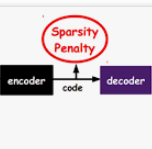Grant-free random access and uplink non-orthogonal multiple access (NOMA) have been introduced to reduce transmission latency and signaling overhead in massive machine-type communication (mMTC). In this paper, we propose two novel group-based deep neural network active user detection (AUD) schemes for the grant-free sparse code multiple access (SCMA) system in mMTC uplink framework. The proposed AUD schemes learn the nonlinear mapping, i.e., multi-dimensional codebook structure and the channel characteristic. This is accomplished through the received signal which incorporates the sparse structure of device activity with the training dataset. Moreover, the offline pre-trained model is able to detect the active devices without any channel state information and prior knowledge of the device sparsity level. Simulation results show that with several active devices, the proposed schemes obtain more than twice the probability of detection compared to the conventional AUD schemes over the signal to noise ratio range of interest.
翻译:在本文中,我们建议为MMTC上行链路框架中的无赠款的随机访问和上链接非横向多存取(NOMA)系统实施两种新型的基于团体的深神经网络主动用户探测(AUD)计划,以用于无赠款的稀有代码多重访问(SCMA)系统。拟议的AUD计划学习非线性绘图,即多维代码集结构和频道特征。这是通过接收到的信号实现的,该信号包含与培训数据集有关的设备活动的稀疏结构。此外,离线预培训模型能够在没有任何频道状态信息和事先对设备宽度了解的情况下探测活动装置。模拟结果表明,使用几种主动装置,拟议的计划获得的检测概率比常规AUD计划高出一倍多,超过了对噪音比率范围的信号。



































